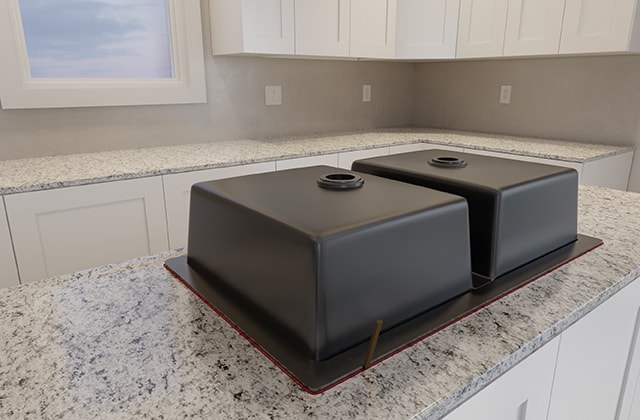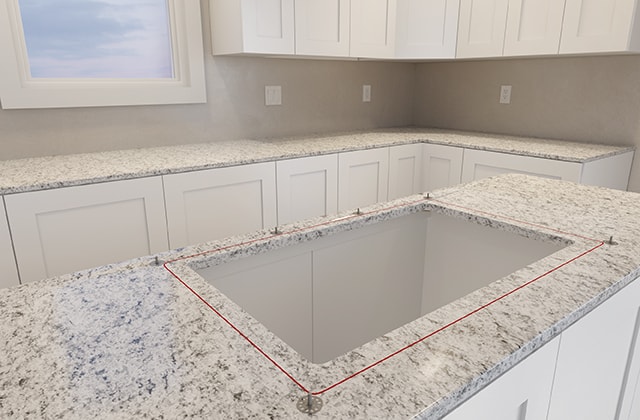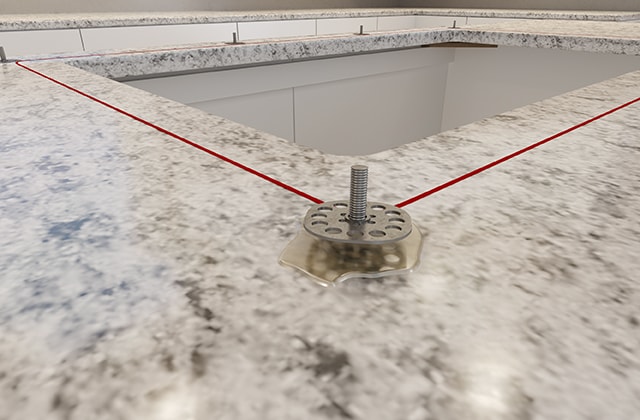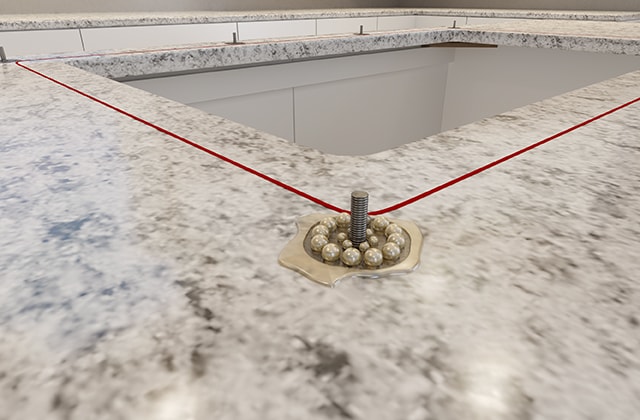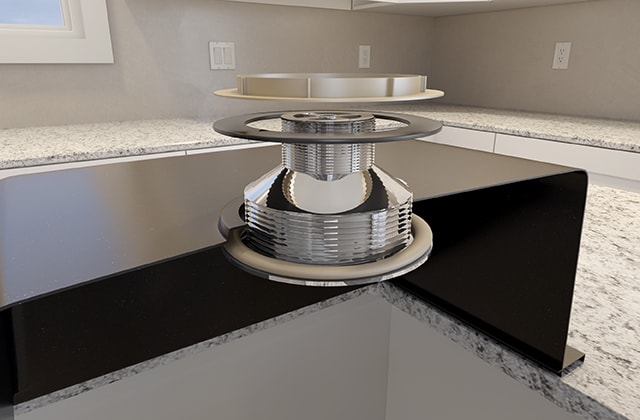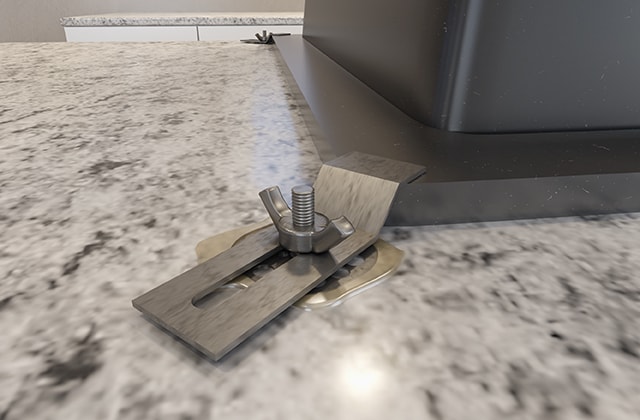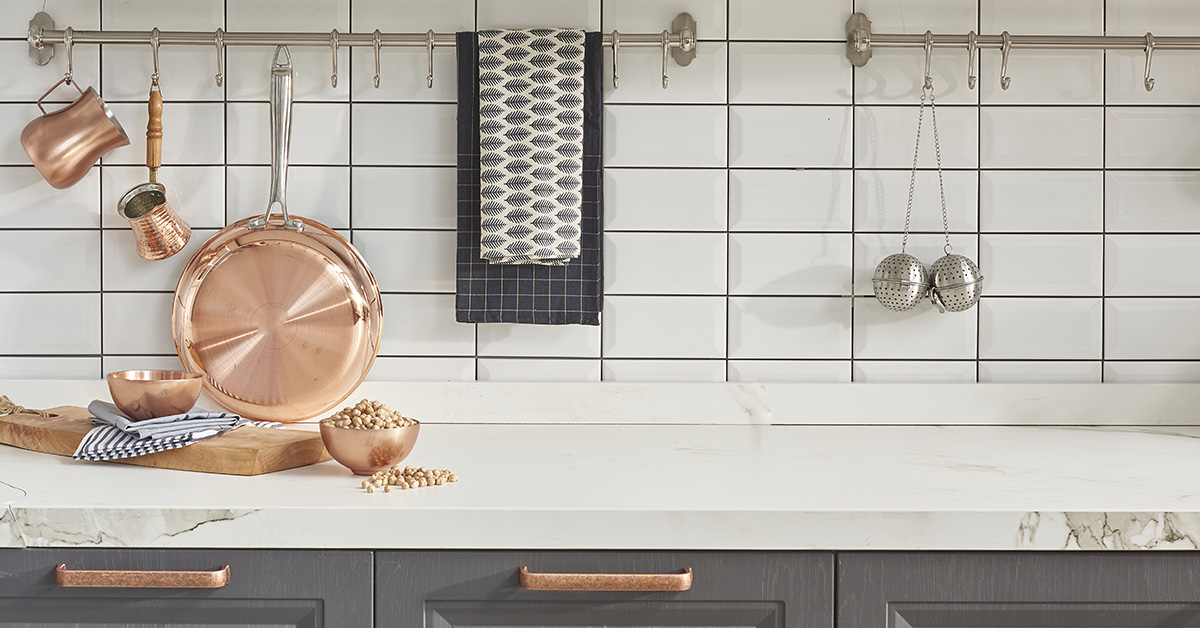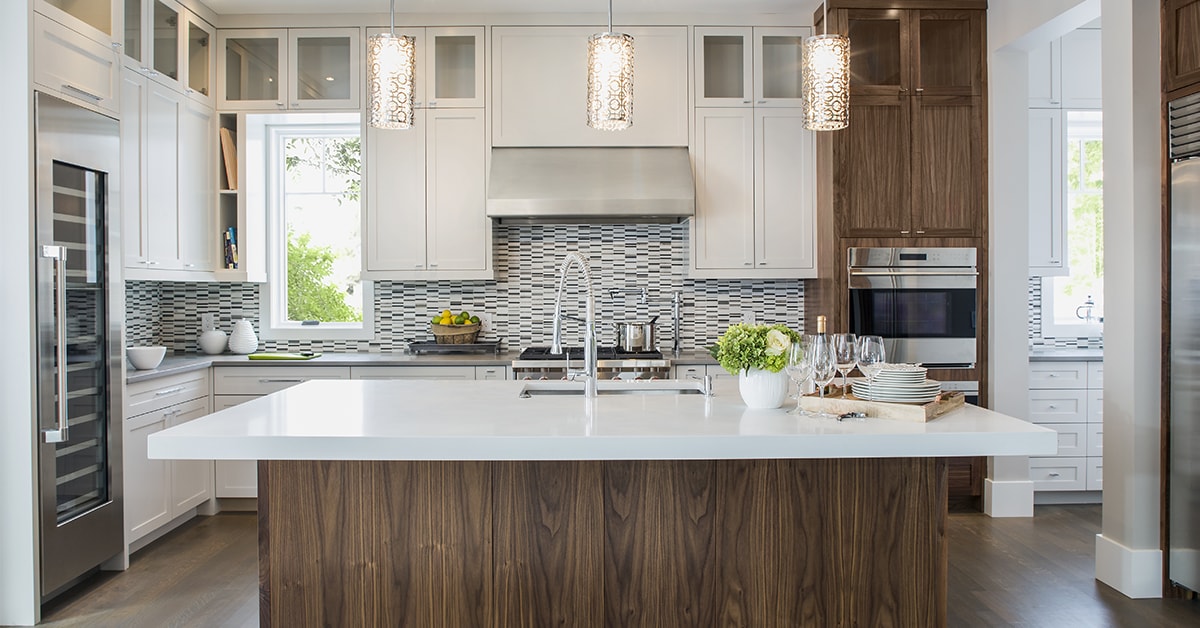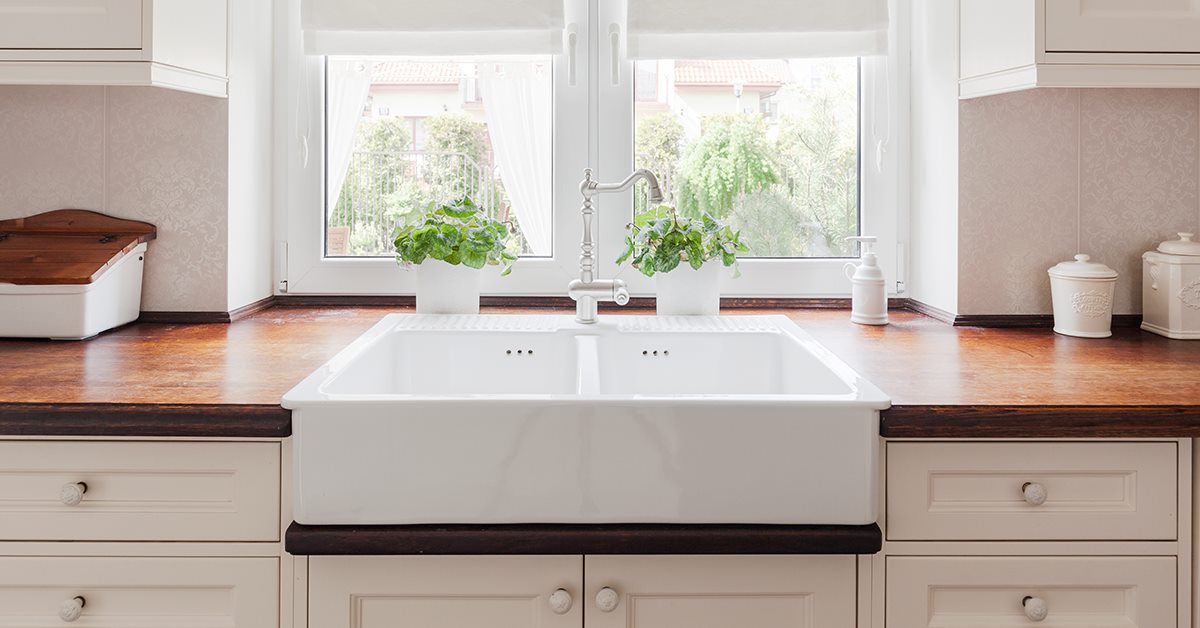Before you begin
Undermount sinks are not recommended for wood, laminate or ceramic-tile countertops.
Always refer to the installation guide supplied by the manufacturer.
This project explains how to install an undermount sink using clips and glue-on bases.
Other methods include:
- Rail system
- Mounting brackets
- Wood support frame
- Plywood (½") under the counter
Although a wood support frame is an option for all sinks, it is required for heavy non-rectangular sinks and granite sinks.
Ensure that the frame and fasteners can support 300 lbs (136 kg). It’s not only the weight of the sink itself you have to consider, but the weight of the sink filled with water, the waste disposer and dishes.
First and foremost: Ask a professional to cut the openings in the countertop.
Pre-existing plumbing under the sink is assumed, and that the sink will be installed BEFORE the countertop is secured to the base cabinets.
Wear safety glasses and protective gloves when working under the counter.
Don’t forget: turn off the water supply!









